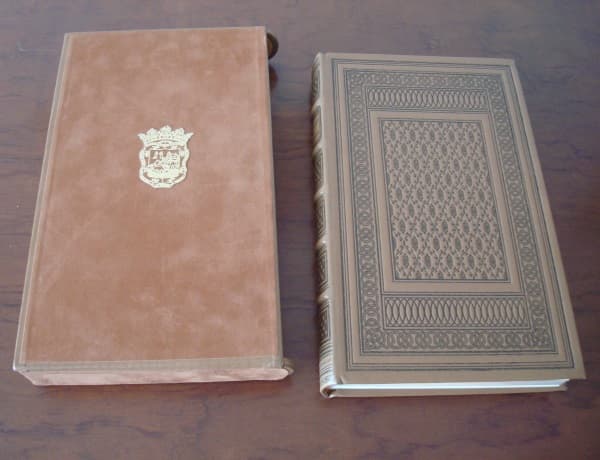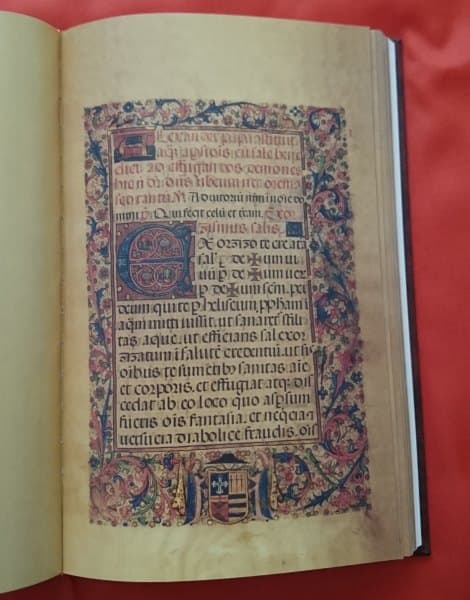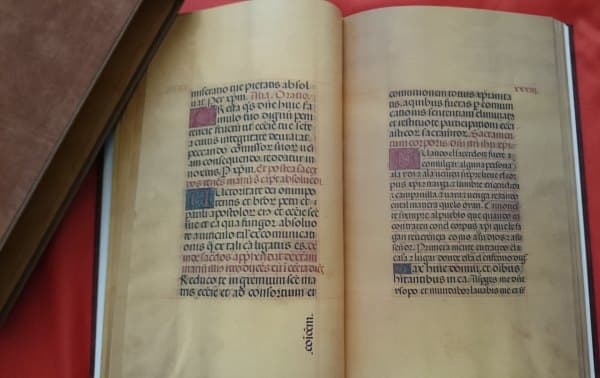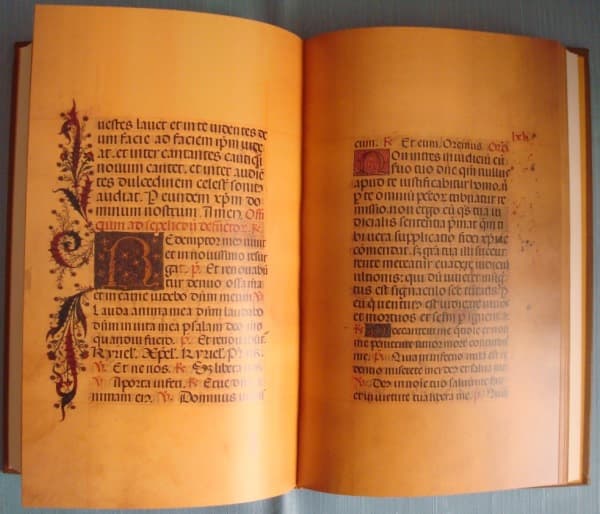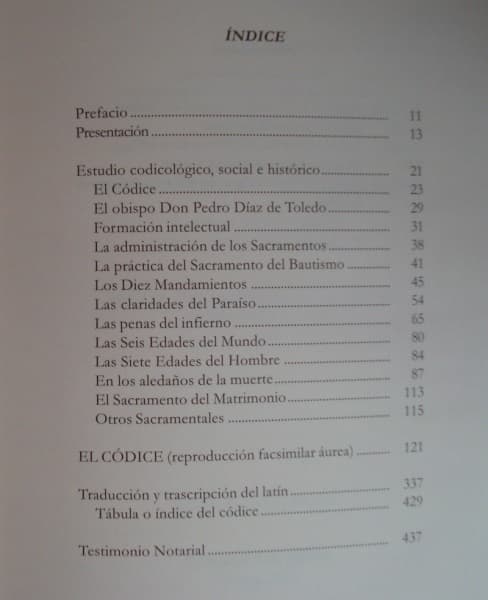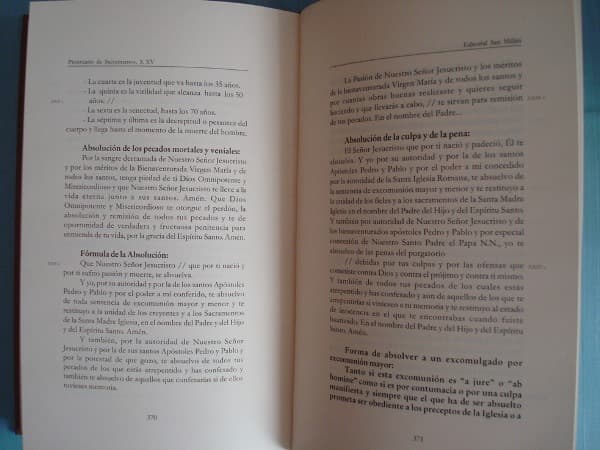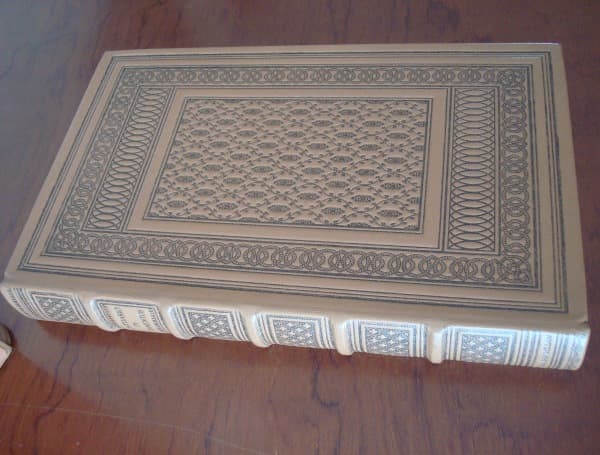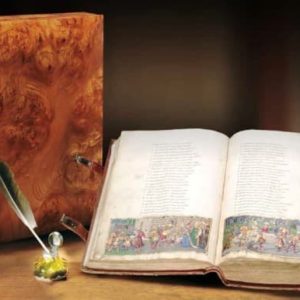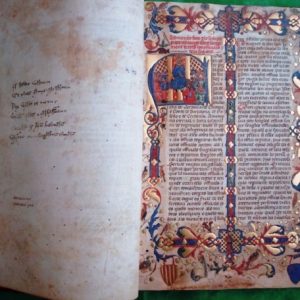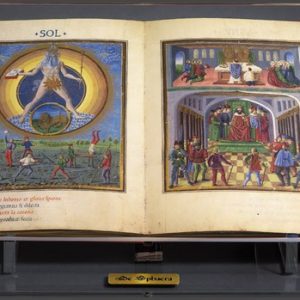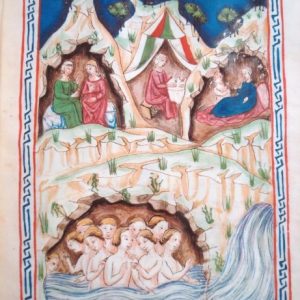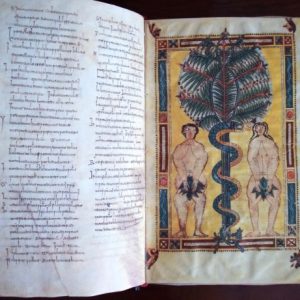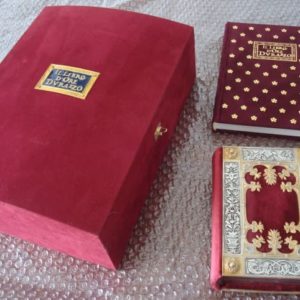Description
The Handbook of Sacraments and Other Blessings with doctrinal points, is a beautiful codex, exponent of religiosity of his time and used, around 1488, Pedro Diaz de Toledo and Ovalle, first bishop of Malaga after the reconquest of the city by the Catholic Monarchs in 1487. Man of letters, highly cultured humanist, he was master of the Marquis de Santillana who shared friendship, library and literary tastes. He was also a close friend of Archbishop of Granada, Hernando de Talavera fray.
The following information about this work comes from codicological study from Latin to Spanish translation included, who has done for this edition Dr. of Philosophy and former Archivist of the Cathedral of Malaga, Don Vidal Gonzalez Sanchez.
“Among the great documentary wealth that encloses the Historical Archives of the Cathedral Chapter of Malaga, highlight a gothic-Mudejar codex in our work cataloging the file, we were fortunate to identify thanks to the coat of arms that looks at several of its pages , lacking folio cover where no doubt data identification and explanation of its contents and other circumstances they would.
It is a codex on vellum, bound in leather over wooden boards with dimensions 265 x 195 mm, consisting of one hundred and six folios helpful whose writing box is 165 x 105 mm, written in capital letter gothic-libraria very beautiful calligraphy, easy to read even with abbreviations that make it sometimes difficult. Field of the side margins varies between 30 and 70 mm of major dimensions corresponding to lower together with the external side, while the upper and the lower range between 30 and 40 mm. Many uncial letters are illuminated with graceful arabesques and floral representation, especially in the pages: I, VIII, LXXIII, LXXXI and XCIIII. In some of these pages you can see magnificent polychrome fringes, decorated with plants, animals, floral and heraldic human hosting a major reason is none other than the coat of arms of the owner of the book, Dr. Diaz de Toledo and Ovalle.
In December 1487, while in Zaragoza which accompanied the Court, Toledo received papal bulls with his appointment as bishop of Malaga.
Dr. Pedro Diaz de Toledo and Ovalle was a true man of letters, less known facet of his life, but we can say it was a full humanist. We can say that was at once disciple and teacher of that champion of Spanish literature as it were Don Inigo Lopez de Mendoza, Marquess of Santillana. If we say that was a disciple of the Marquis we rely on that served as chaplain to his house. Marquis received Toledo experience, say good lessons; He learned from his teacher’s writings where copies of the summit works, rare books of European cultural circles, some of which was purchased or made for the Marquis were copied. Don Inigo and his family filled the young chaplain of love and trust and Toledo received the last words of that at the time of his death. If we said that was also master of the Marquis de Santillana, the reason is that Toledo oriented on many issues of theology, law, etc., to his patron that was commissioned to translate for him the choicest works of antiquity, as the Marquis always regretted their poor knowledge in classical languages.
After having governed the Church of Málaga with skill and prudence, under the advice and under his close friend the Archbishop of Granada Fray Hernando de Talavera, beside which he stood, he gave his soul to God the first bishop of Malaga after the Reconquista, in the city of Darro between late on the first day 21 and 23 August 1499. had come there to greet the monarch who at that time were in Granada and deal with important issues of utility to his bishopric, so that kings promised you close to the city of Malaga. Right there the bishop gave his testament Toledo. His remains were transferred to their malacitana headquarters where they received provisional burial in the Cathedral until the construction of the chapel pantheon under the invocation of San Jeronimo end immediately. “
The book is an integrated facsimile reproduction of the original work and its corresponding translation from Latin to Spanish and a codicological study carried out by the aforementioned Dr. D. Vidal González. Limited edition of 925 copies and numbered with notarial deed.
Exemplary with an extraordinary and beautiful leather binding, embossed and dry decorated, spine ribs, golden format 17.5 x 27.8 cm. Presented in an exclusive case, open type, in brown leather and microfiber, with the golden shield of the city of Malaga mounted on both planes. Format 18 x 29 x 4 cm.
“prontuario”, from the Latin promptuarium, pantry, is, according to the Royal Spanish Academy of the Language:
– Summary or brief note of various things in order to keep them in mind when they are needed.
– Compendium of the rules of a science or art.
Copy in perfect condition and corresponding to the exclusive number 1 of the edition.
Shipping costs paid by the buyer, according to order and destination. Ask us any questions you have, indicating the article reference.




